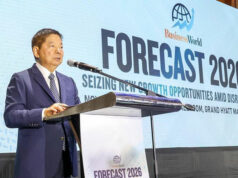THE delay in the passage of the Energy Efficiency and Conservation Act (EE&C) is depriving the economy of the immediate benefits of the P37.8 trillion estimated savings from curbing energy use through 2040, the Philippine Energy Efficiency Alliance (PE2) said.
PE2, a non-stock, non-profit organization of energy efficiency market stakeholders, said in a statement on Thursday that the proposed law could also soften the impact of rising energy prices.
“This means that households, small businesses, buildings, industries, public facilities and other energy end-use sectors stand to collectively save less than P 37.8 trillion in avoided energy purchases between now and 2040 if the passage of the EE&C Act slips beyond this first quarter of 2019,” PE2 President Alexander Ablaza said.
On Jan. 16, 2019, the Bicameral Conference Committee approved the reconciled Senate and House versions of the measure, which institutionalizes a framework to advance energy efficiency and conservation practices in the country.
The reconciled version of Senate Bill No. 1531 and House Bill No. 8629 calls for the creation of a national energy efficiency and conservation plan that sets national targets, strategies, while imposing a regular monitoring and evaluation system.
The reconciled bill is awaiting the signature of the President, who recently signed several laws.
Mr. Ablaza said the country is the last among members of the Association of Southeast Asian Nations (ASEAN) to enforce energy efficiency and conservation through legislation.
“The EE&C bill had a 28-year history of being refiled since the 8th Congress. The country cannot afford to prolong this delay,” he said.
Mr. Ablaza renewed the call of PE2 members for the immediate signing into law of the reconciled bill after the continuous increase in power and fuel prices.
He said delays in the passage of the bill pushes back the positive effects of mandatory implementation, including dampening the rise in energy prices.
“Our energy market badly needs to arrest the business-as-usual escalation of electricity tariff and fossil fuel prices, and a further delay in the implementation of energy-saving projects, programs and investments will only serve to delay their decelerative effects on energy price increases,” he said.
He said scaling up an energy efficiency program eases the rise energy prices as it results in deferring new capital expenditure for upgrades in energy generation, transmission and distribution infrastructure. It also cuts the expected rise in the country’s dependence on imported fuel sources, he added.
Mr. Ablaza earlier said that the bicameral committee agreed to re-anchor the fiscal incentives provision of the bill on Executive Order No. 226 or the Omnibus Investments Code of 1987, as amended.
In an earlier statement, PE2 said the Senate panel viewed the adjustment as a reasonable balance between the incentive rationalization objectives of the Department of Finance and the requirements of private investors.
The House panel agreed with the compromise reduction, but wanted to put on record that every peso of granted incentives to energy efficiency projects will result in a P2.31 reflow to the national treasury in the form of additional tax revenues, in addition to other socio-economic benefits.
“The conferees from both chambers likewise agreed to exempt energy efficiency investments from Article 32(1) of EO 226, thereby enabling foreign-owned projects to avail of fiscal incentives,” PE2 said.
The alliance said the Senate and House panels agreed to insert “clearer language” that mandates local government units (LGUs) to establish energy efficiency and conservation offices and appoint officers, with the option to do so within their existing plantilla and resource framework.
Also, the bicameral body accepted the Senate panel’s recommendation to include a new section that would encourage innovative procurement, contracting and financing procedures for government-implemented energy efficiency projects in public facilities.
The Department of Interior and Local Government and the Department of Science and Technology were added in the composition of the proposed inter-agency energy efficiency and conservation committee. — Victor V. Saulon



